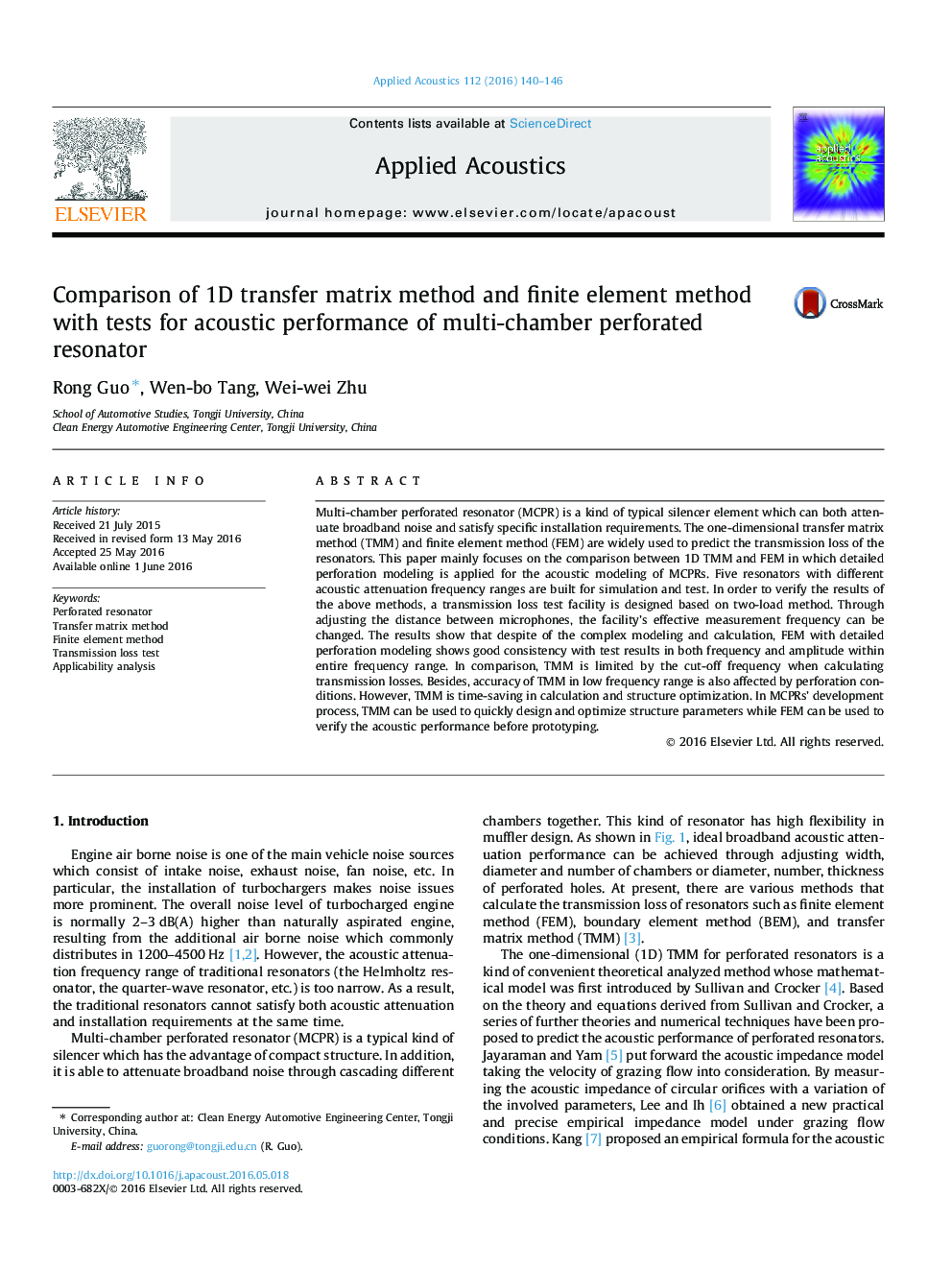| Article ID | Journal | Published Year | Pages | File Type |
|---|---|---|---|---|
| 760741 | Applied Acoustics | 2016 | 7 Pages |
Multi-chamber perforated resonator (MCPR) is a kind of typical silencer element which can both attenuate broadband noise and satisfy specific installation requirements. The one-dimensional transfer matrix method (TMM) and finite element method (FEM) are widely used to predict the transmission loss of the resonators. This paper mainly focuses on the comparison between 1D TMM and FEM in which detailed perforation modeling is applied for the acoustic modeling of MCPRs. Five resonators with different acoustic attenuation frequency ranges are built for simulation and test. In order to verify the results of the above methods, a transmission loss test facility is designed based on two-load method. Through adjusting the distance between microphones, the facility’s effective measurement frequency can be changed. The results show that despite of the complex modeling and calculation, FEM with detailed perforation modeling shows good consistency with test results in both frequency and amplitude within entire frequency range. In comparison, TMM is limited by the cut-off frequency when calculating transmission losses. Besides, accuracy of TMM in low frequency range is also affected by perforation conditions. However, TMM is time-saving in calculation and structure optimization. In MCPRs’ development process, TMM can be used to quickly design and optimize structure parameters while FEM can be used to verify the acoustic performance before prototyping.
